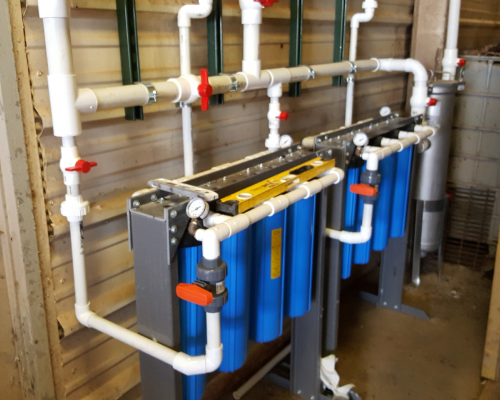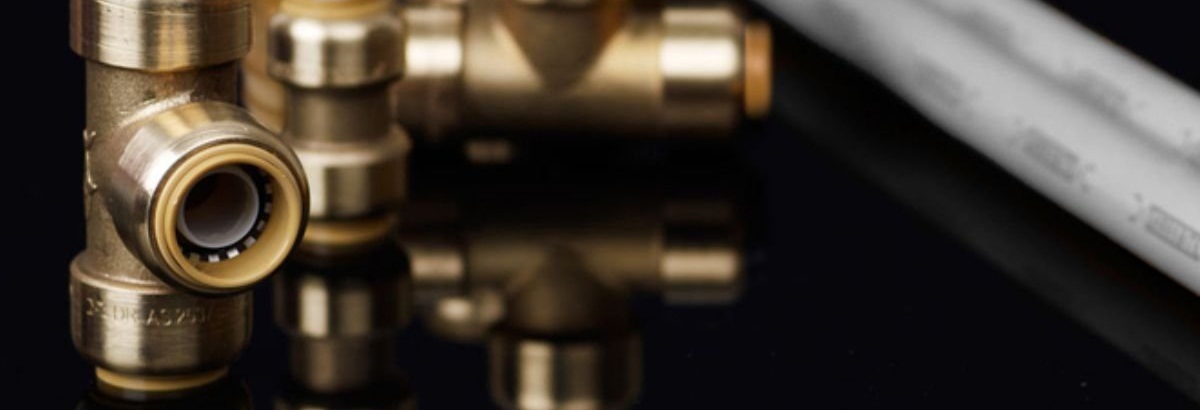The Core Parts of Your Home's Plumbing System
The Core Parts of Your Home's Plumbing System
Blog Article
Presented here underneath you will find additional outstanding data involving Understanding Your Home's Plumbing Anatomy.

Recognizing how your home's pipes system functions is essential for every property owner. From delivering clean water for drinking, cooking, and bathing to safely removing wastewater, a well-kept plumbing system is important for your household's health and comfort. In this extensive guide, we'll discover the intricate network that makes up your home's plumbing and offer tips on upkeep, upgrades, and taking care of typical problems.
Introduction
Your home's plumbing system is greater than simply a network of pipelines; it's an intricate system that guarantees you have accessibility to clean water and effective wastewater removal. Understanding its parts and just how they interact can aid you stop expensive repair services and ensure everything runs efficiently.
Basic Components of a Plumbing System
Pipes and Tubing
At the heart of your pipes system are the pipelines and tubes that bring water throughout your home. These can be made of various products such as copper, PVC, or PEX, each with its benefits in regards to sturdiness and cost-effectiveness.
Fixtures: Sinks, Toilets, Showers, and so on.
Components like sinks, bathrooms, showers, and bathtubs are where water is used in your house. Recognizing how these components attach to the plumbing system helps in diagnosing troubles and preparing upgrades.
Valves and Shut-off Points
Shutoffs manage the flow of water in your pipes system. Shut-off valves are essential during emergency situations or when you need to make repair work, permitting you to separate parts of the system without interrupting water flow to the whole home.
Water System System
Key Water Line
The primary water line links your home to the community water or an exclusive well. It's where water enters your home and is dispersed to different fixtures.
Water Meter and Pressure Regulatory Authority
The water meter actions your water use, while a pressure regulator ensures that water moves at a secure stress throughout your home's pipes system, stopping damage to pipelines and components.
Cold Water vs. Hot Water Lines
Understanding the difference in between cold water lines, which supply water straight from the major, and hot water lines, which carry warmed water from the hot water heater, assists in troubleshooting and preparing for upgrades.
Drain System
Drain Pipes and Traps
Drain pipelines bring wastewater away from sinks, showers, and commodes to the drain or septic tank. Catches prevent sewage system gases from entering your home and also catch debris that might create blockages.
Air flow Pipes
Air flow pipes enable air right into the drain system, protecting against suction that could slow down drainage and trigger catches to empty. Proper air flow is crucial for preserving the stability of your pipes system.
Importance of Appropriate Drain
Making sure appropriate water drainage protects against backups and water damage. Frequently cleaning up drains pipes and keeping catches can prevent costly repair work and extend the life of your plumbing system.
Water Heating Unit
Types of Water Heaters
Hot water heater can be tankless or traditional tank-style. Tankless heating systems heat water on demand, while containers save warmed water for prompt use.
How Water Heaters Link to the Pipes System
Recognizing how water heaters link to both the cold water supply and hot water distribution lines assists in detecting concerns like insufficient hot water or leaks.
Upkeep Tips for Water Heaters
On a regular basis purging your hot water heater to get rid of debris, checking the temperature settings, and examining for leaks can expand its life-span and boost energy effectiveness.
Typical Pipes Concerns
Leakages and Their Reasons
Leakages can take place as a result of aging pipes, loose fittings, or high water pressure. Addressing leaks promptly protects against water damages and mold and mildew growth.
Clogs and Clogs
Obstructions in drains pipes and bathrooms are often brought on by purging non-flushable products or a buildup of oil and hair. Utilizing drain screens and bearing in mind what goes down your drains pipes can stop blockages.
Signs of Pipes Issues to Watch For
Low tide pressure, slow-moving drains pipes, foul odors, or abnormally high water expenses are indications of prospective plumbing problems that should be attended to quickly.
Pipes Upkeep Tips
Routine Assessments and Checks
Arrange annual pipes examinations to capture problems early. Search for signs of leakages, deterioration, or mineral accumulation in faucets and showerheads.
DIY Upkeep Tasks
Basic tasks like cleaning tap aerators, looking for toilet leaks making use of color tablets, or insulating revealed pipes in cold climates can prevent significant pipes issues.
When to Call a Professional Plumbing Technician
Know when a plumbing issue calls for expert knowledge. Attempting intricate repair work without proper understanding can bring about more damages and higher repair service costs.
Updating Your Pipes System
Reasons for Upgrading
Updating to water-efficient components or replacing old pipelines can improve water top quality, minimize water bills, and enhance the worth of your home.
Modern Pipes Technologies and Their Benefits
Check out technologies like clever leak detectors, water-saving commodes, and energy-efficient water heaters that can conserve money and minimize environmental effect.
Cost Factors To Consider and ROI
Calculate the ahead of time costs versus lasting savings when taking into consideration plumbing upgrades. Several upgrades pay for themselves with minimized utility expenses and fewer repair services.
Environmental Impact and Preservation
Water-Saving Components and Home Appliances
Mounting low-flow faucets, showerheads, and bathrooms can substantially reduce water use without giving up performance.
Tips for Lowering Water Use
Easy routines like fixing leakages without delay, taking much shorter showers, and running complete loads of laundry and meals can save water and reduced your energy costs.
Eco-Friendly Pipes Options
Consider sustainable plumbing materials like bamboo for floor covering, which is durable and green, or recycled glass for counter tops.
Emergency situation Readiness
Actions to Take Throughout a Pipes Emergency situation
Know where your shut-off valves are located and how to turn off the supply of water in case of a ruptured pipe or major leak.
Relevance of Having Emergency Situation Contacts Helpful
Maintain call information for local plumbing technicians or emergency situation solutions conveniently available for quick reaction during a pipes situation.
Do It Yourself Emergency Fixes (When Appropriate).
Short-term repairs like making use of air duct tape to spot a leaking pipe or placing a container under a leaking tap can lessen damages till a specialist plumber gets here.
Verdict.
Understanding the anatomy of your home's plumbing system equips you to preserve it successfully, conserving money and time on repair services. By adhering to normal upkeep regimens and remaining educated concerning modern-day pipes modern technologies, you can guarantee your pipes system runs effectively for many years to find.
HOW YOUR PLUMBING SYSTEM WORKS
Which Pipes Do What?
Blue lines = fresh water supply entering the building
Red lines = hot water supply entering the building
Grey lines = pipes carrying waste away from the building and venting pipes carrying gases away from the building (through the roof)
YOUR MAIN PLUMBING SYSTEMS
There are two main plumbing systems that support your home s basic plumbing needs one that brings clean water into your home, and one that sends dirty water away from your home. Connected to the toilet, bath, shower, and other faucets in your home, these two systems keep your water flowing in the right directions.
ACCESSING FRESH WATER
Fresh and clean water is brought into your home through the main water supply line . Filtered through one pipe, this water is pressured to flow into the various fixtures in your home at any given time.
This water can be sourced from a well located on your property, a pond or river (mostly cottages), or, as in most cases, from the city s municipal water treatment centre. However, it is important to note that water that is untreated, such as the water siphoned from ponds or rivers, may not be safe to drink. Personal water supplies always need to be treated for hardness and contaminants before consumed.
MUNICIPAL WATER SUPPLIES
Improve taste and odour
Remove sediment
Eliminate hardness
Reduce chlorine
COLD WATER SUPPLY VS. HOT WATER SUPPLY
Cold water flows into your home or building through the service line, which then distributes hot or cold water to your fixtures. This line is most commonly run through a central column that runs floor to floor. Hot water runs in short and straight pipes as the longer the pipeline, the more heat that will be lost in the transfer. Having shorter pipes also allows residents to access hot water more quickly.
WASTE WATER SYSTEM
Your wastewater system is divided into two parts pipes that send wastewater away from your home and venting pipes that send sewer gas away from your home. Sewage water travels through pipes that flush the water and waste towards local sewers that are operated and managed by your city or town. Most sewer systems rely on gravity to move the wastewater to where it needs to go.
The further away from your toilet or sink, the larger wastewater pipes become. This allows for waste to be disposed of from various parts of your home or business at once without pipe blockages. The angle and flow of these pipes are also essential for keeping your waste pipes clear of build up.
https://harrisplumbing.ca/how-your-home-plumbing-system-works/

HOW YOUR PLUMBING SYSTEM WORKS
Which Pipes Do What?
YOUR MAIN PLUMBING SYSTEMS
There are two main plumbing systems that support your home s basic plumbing needs one that brings clean water into your home, and one that sends dirty water away from your home. Connected to the toilet, bath, shower, and other faucets in your home, these two systems keep your water flowing in the right directions.
ACCESSING FRESH WATER
Fresh and clean water is brought into your home through the main water supply line . Filtered through one pipe, this water is pressured to flow into the various fixtures in your home at any given time.
This water can be sourced from a well located on your property, a pond or river (mostly cottages), or, as in most cases, from the city s municipal water treatment centre. However, it is important to note that water that is untreated, such as the water siphoned from ponds or rivers, may not be safe to drink. Personal water supplies always need to be treated for hardness and contaminants before consumed.
MUNICIPAL WATER SUPPLIES
COLD WATER SUPPLY VS. HOT WATER SUPPLY
Cold water flows into your home or building through the service line, which then distributes hot or cold water to your fixtures. This line is most commonly run through a central column that runs floor to floor. Hot water runs in short and straight pipes as the longer the pipeline, the more heat that will be lost in the transfer. Having shorter pipes also allows residents to access hot water more quickly.
WASTE WATER SYSTEM
Your wastewater system is divided into two parts pipes that send wastewater away from your home and venting pipes that send sewer gas away from your home. Sewage water travels through pipes that flush the water and waste towards local sewers that are operated and managed by your city or town. Most sewer systems rely on gravity to move the wastewater to where it needs to go.
The further away from your toilet or sink, the larger wastewater pipes become. This allows for waste to be disposed of from various parts of your home or business at once without pipe blockages. The angle and flow of these pipes are also essential for keeping your waste pipes clear of build up.
https://harrisplumbing.ca/how-your-home-plumbing-system-works/
As an enthusiastic reader on Plumbing Installation 101: All You Need to Know, I figured sharing that excerpt was a smart idea. Those who enjoyed reading our blog entry if you please be sure to pass it around. Thank-you for taking the time to read it.
Prices & Booking Report this page